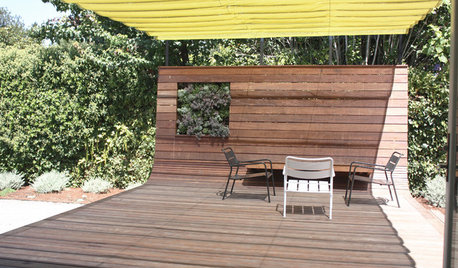Question About Die Back Disease
sandy808
15 years ago
Related Stories

GARDENING GUIDESTree Care: Common Tree Diseases and What to Do About Them
Learn to recognize trees that may be affected by diseases or pests so you can quickly take action
Full Story
ORGANIZINGPre-Storage Checklist: 10 Questions to Ask Yourself Before You Store
Wait, stop. Do you really need to keep that item you’re about to put into storage?
Full Story
MOST POPULAR8 Questions to Ask Yourself Before Meeting With Your Designer
Thinking in advance about how you use your space will get your first design consultation off to its best start
Full Story
WORKING WITH PROS10 Questions to Ask Potential Contractors
Ensure the right fit by interviewing general contractors about topics that go beyond the basics
Full Story
GREEN DECORATING8 Questions to Help You See Through Green Hype
With the ecofriendly bandwagon picking up some dubious passengers, here's how to tell truly green products and services from the imposters
Full Story
HEALTHY HOMEWhat You Need to Know About Dust and How to Fight It
Breathe easier with these 10 tips for busting mites, dander and other microscopic undesirables
Full Story
GARDENING GUIDESNew Ways to Think About All That Mulch in the Garden
Before you go making a mountain out of a mulch hill, learn the facts about what your plants and soil really want
Full Story
WORKING WITH PROSWhat Do Landscape Architects Do?
There are many misconceptions about what landscape architects do. Learn what they bring to a project
Full Story
DECKSA Family-Friendly California Yard Wises Up About Water
Pavers and unthirsty plants replace Kentucky bluegrass in a Menlo Park landscape for a family of 4
Full Story
HEALTHY HOMEWhat to Know About Controlling Dust During Remodeling
You can't eliminate dust during construction, but there are ways to contain and remove as much of it as possible
Full Story





luis_pr
sandy808Original Author
Related Professionals
Garden City Landscape Architects & Landscape Designers · Mountain Brook Landscape Architects & Landscape Designers · Belmont Landscape Contractors · Burlington Landscape Contractors · Cliffside Park Landscape Contractors · Edinburg Landscape Contractors · Hampton Bays Landscape Contractors · Hicksville Landscape Contractors · Oak Harbor Landscape Contractors · Quincy Landscape Contractors · Salem Landscape Contractors · Westchester Landscape Contractors · Shenandoah Landscape Contractors · Bedford Swimming Pool Builders · Orangevale Swimming Pool Buildersluis_pr
sandy808Original Author
sandy808Original Author
luis_pr
sandy808Original Author
luis_pr
sandy808Original Author
luis_pr
luis_pr